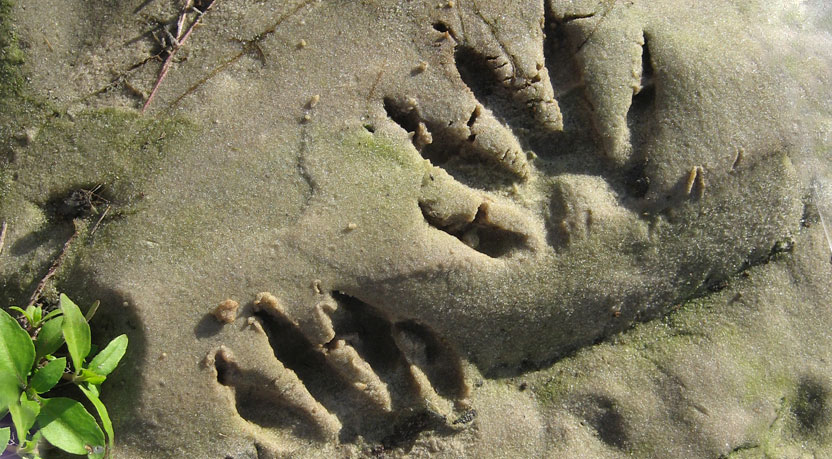NEED LOCAL HELP? We have wildlife removal professionals servicing 95% of the USA. Click here to hire a local raccoon removal expert in your home town. Updated 2018. But read the below advice first!
Raccoon tracks are pretty distinguishable when compared to other animal tracks, mainly because of their five toes and the weird way they walk, where the hind feet land next to or slightly before their opposite front feet, creating a recognizable pattern. This pattern makes identification pretty straightforward.

Raccoons have five long toes on each foot. The toes connect to the palm pad, with the inside toe registering a little bit lower than the other toes. With crescent-shaped palm pads that are wider on the outside portion of the feet and larger on the hind tracks, you can easily determine if you’re dealing with a raccoon even if you’re not an experienced tracker.
You can also figure out if the animal you’re tracking is a raccoon by the animal’s scat. Raccoon feces look pretty much like dog feces, with even thickness and blunt ends, often containing traces of berries. Raccoon scat does vary, though, so you should consult a specialized source if you’re not sure.
The raccoon tracks will be slightly asymmetrical, showing small and sharp claws. Behind the palm pad, you will sometimes be able to see the heel pad on the outside of the leg. The hind tracks will be larger than the front tracks.
A raccoon’s right front track will be about 1.5 to 3.2 inches long and 1.4 to 2.9 inches wide.
Its right hind track will be about 1.4 to 4.1 inches long and 1.3 to 3 inches wide.
Even with all this information, I understand if you’re not too keen on tracking animals. After all, in our modern world, you kind of have to be passionate about it in order to be good at it. iTrack wildlife apps might be the thing for you, so feel free to give them a try.
Go back to the Raccoons in the attic home page.